Venture is Back, Baby
By Jon Callaghan, December 2, 2009
Over the past few weeks we’ve seen extremely high activity in new venture investments. Starting in September, we witnessed the return of multiple term sheet deals, short fuse situations, and a renewed urgency to most fund-raisings. I heard last week of a hot late stage deal attracting ten (yes 10) term sheets. It’s a really great company, but just one quarter ago that number would have been much lower. FastCompany’s Q3 Venture Capital Activity Report picks up some of this, with Q3’s activity marking a high for 2009, and growing 14% from Q2. The same report shows Series A internet sector deals totaled 66 in Q3, up from 20 in Q1 of 2009. Our sense is that Q4 will show similarly high numbers.
The same VCs who hunkered down in January were back in the game in September, and they were back in force. We call the rise in new investment activity, “back to school investing”, and it represents a significant return to health after the prolonged hiatus that started in Q4 2008 with the infamous “RIP Good times” slide deck.
Venture is back. And it’s back because of one word: exits.
In Barron’s this weekend, Michael Santoli quoted a March 2007 Speech by Fed Reserve governor Kevin Warsh in which he said “Liquidity is confidence.” Exits mean liquidity, and liquidity brings confidence to GPs (and LPs), which spurs investment.
Just as analysts and pundits were decrying the “end of the venture experiment,” 2009 was quietly becoming an extraordinary year for venture exits, both in IPO and M&A form. Early 2009 venture-backed IPOs of OpenTable, SolarWinds, and more recently Ancestry.com</a (ACOM) and Fortinet</a (FTNT) have held up in the aftermarket, and more significantly these deals have demonstrated the public market’s desire for growth and comfort with small(er) company risk. There are rumored to be between 50-100 venture-backed companies that plan to file in Q1 2010. Speculation for 2010 IPOs also includes some game-changing companies, most notably Facebook, LinkedIn, and Zynga.
I was recently in group of VCs when someone asked who at the table had a privately held company in their portfolio with over $100mm in annual revenues? All of us raised our hands. I later asked this question of another group of GPs and got a similar show of hands. Even in our young True portfolio, where the median company age is only 2.5 years, the portfolio turned in a strong Q3, generating over $50 million in revenues. Across the valley, there is huge pent up supply of large, rapidly growing, profitable companies, many of which will succeed in accessing public capital in a healthier IPO market. IPO exits create liquidity for GPs and LPs alike, and early demonstrated returns have already restored some early optimism in the valley.
Another reason for optimism is the recent increase in venture-backed M&A activity. We believe this will accelerate dramatically in the coming months because large cap tech currencies are up, layoffs have made these same companies lean and mean, but it’s also made them hungry.
Simply put, November 2009 looks a lot better than November 2008 if you’re a public tech company. Have a look at the 1-year charts for ORCL, MSFT, ADBE, YHOO, GOOG, AAPL to see the market cap’s steady march up to the right. But ’08 and ’09 were also times of RIFs and cost cutting. Think back to the headlines from last year of Google announcing layoffs. Ditto MSFT</a and, more recently, AOL</a , EA, Adobe, etc.
These layoffs have two implications for private company M&A: the first is that by now, most large tech companies have reduced operating expenses dramatically and conserved or generated cash. 2009 was a year of focus, which meant curtailing ambitious new initiatives and reducing R&D spending. These efforts are good to get things cleaned up, but they present a big problem for the future, because big tech needs innovation to grow, and innovation happens fast these days. Many of the most exciting developments in tech are coming from young innovators who are leveraging newer architectures such as web 2.0 and real-time web. Marry those technologies to new distribution channels like Google & Facebook and lower friction sales models like on-demand. New technology, new business models, innovation.
M&A will involve younger companies in the next 12 months, because big tech needs the new stuff, not the old. Electronic Arts buying Playfish for over $400 million, Google’s $750 million purchase of Admob and Intuit buying Mint for $170 million are three recent examples. This should be another good thing for VCs.
Much like the health of the IPO window, the coming M&A Tsunami creates liquidity to the venture business, which will restore confidence in the logic behind the venture capital model. Though admittedly venture takes time, GPs at the “ground level” are seeing this now and acting rationally to deploy capital into this period.
2010 is shaping up to be an extraordinary time for venture capital and by extension, Silicon Valley.

